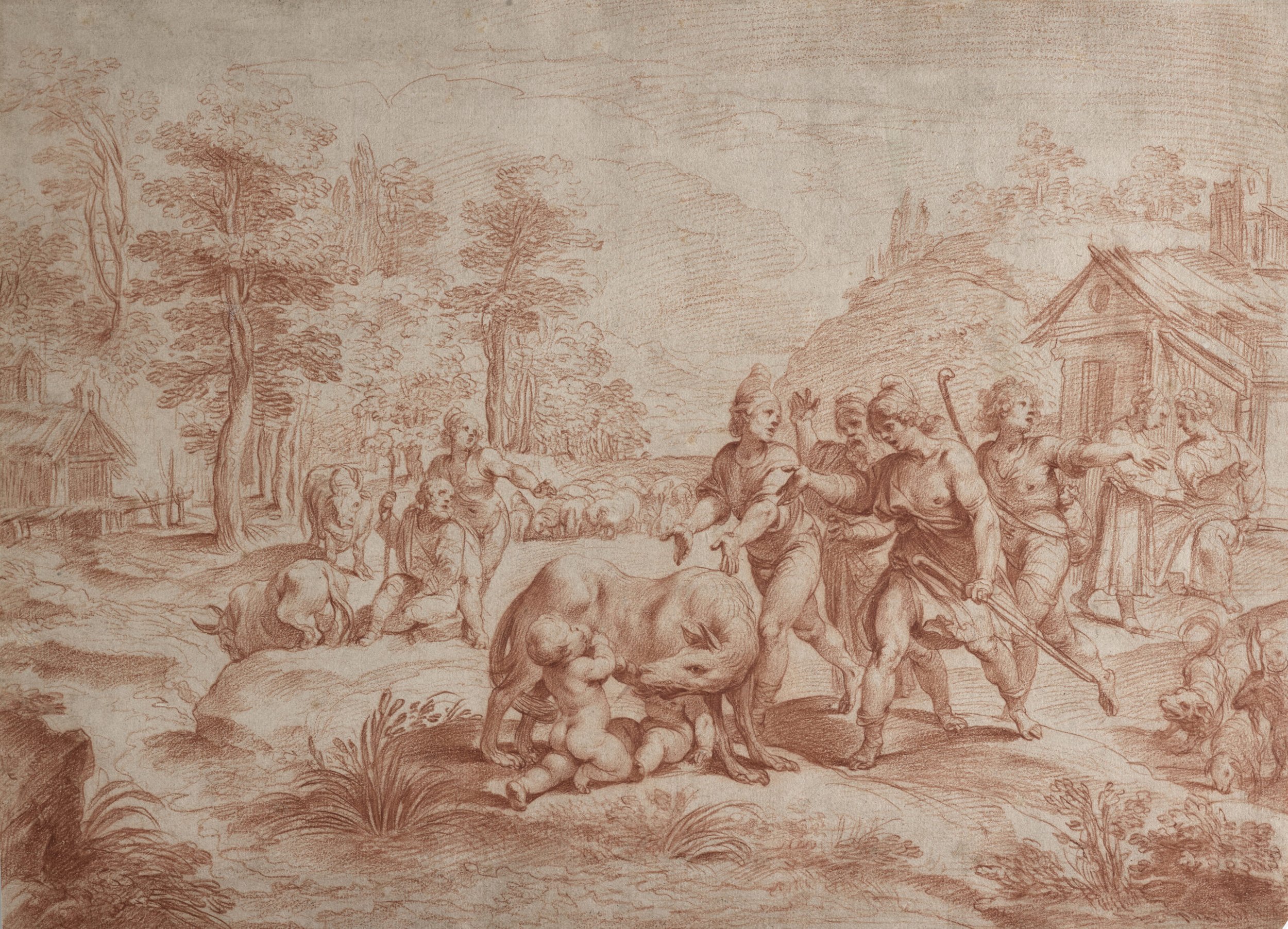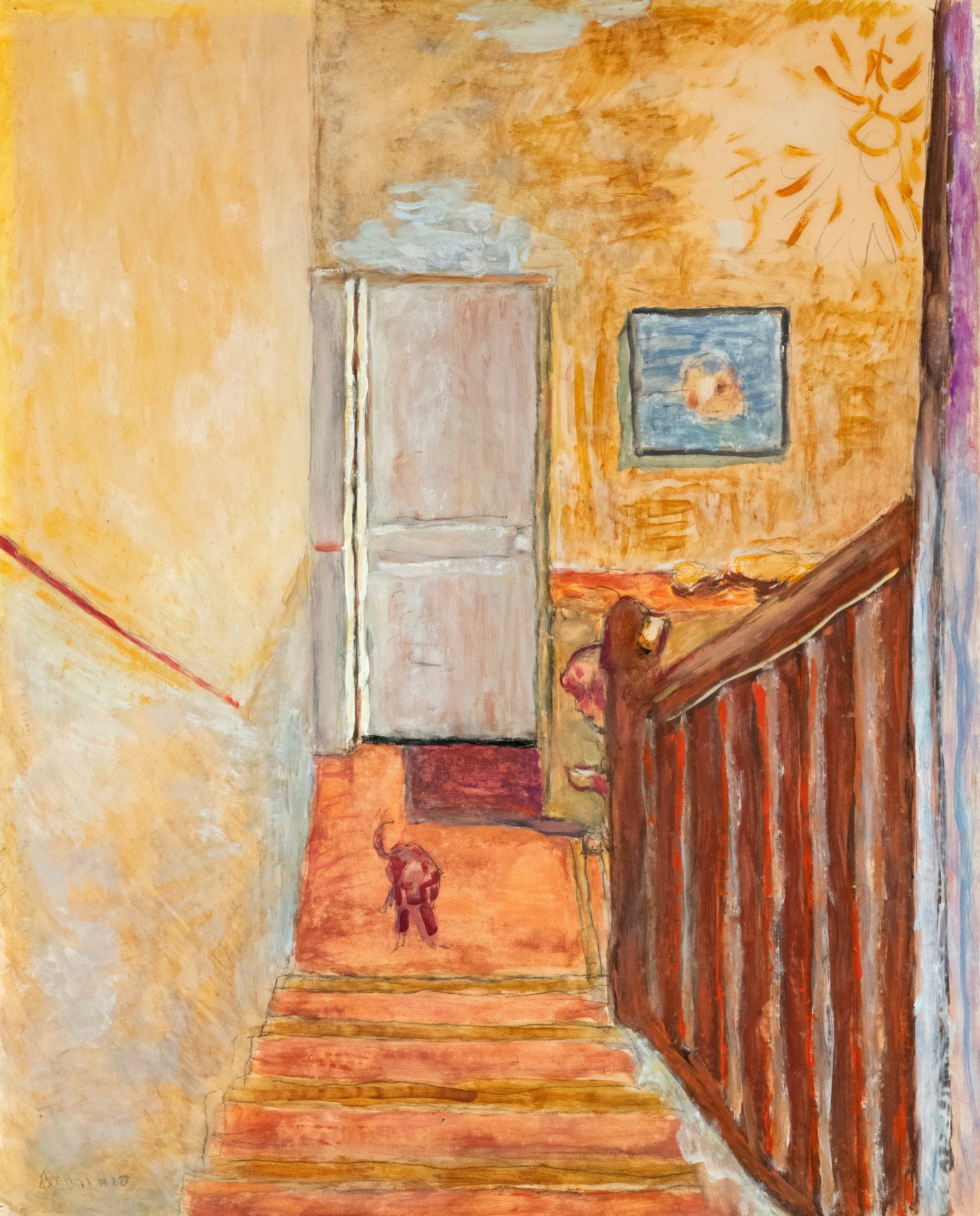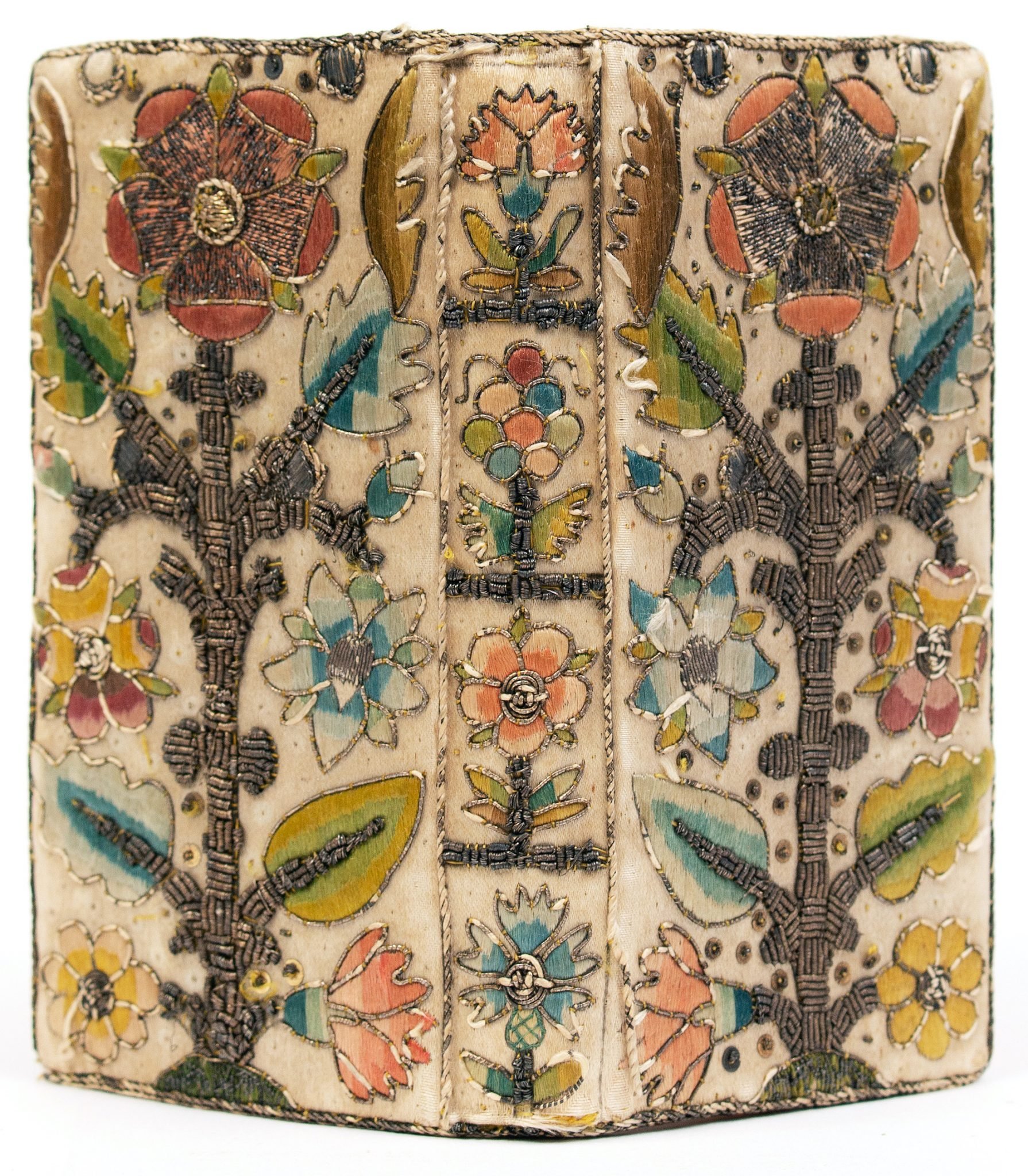THE NEW CRITERION, March 2025
On “Paper, Color, Line,” at the Wadsworth Atheneum.
“Paper, Color, Line: European Master Drawings from the Wadsworth Atheneum,” the exhibition now on view in Hartford, Connecticut, goes against every diminished expectation of what a major museum show today ought to be.1 Just consider the words in its subtitle. European? Master? Drawings? All from the museum’s permanent collection? Swish that vocabulary around your palate like you’ve just supped some pre-phylloxera wine—you probably assumed such old-vine vintages had been long since emptied from the cellars of contemporary politicized discourse. Then book yourself a train to Hartford, as I did, or drive, fly, or walk, and rejoice in the opportunity to see an exhibition whose sole purpose is to rekindle the art of close looking. Such connoisseurship informed the creation of this drawings collection a century ago. It still does today. While you are at it, stay on for the other highlights from the Wadsworth’s permanent collection, on view here in one of the country’s oldest museums, with both Old Master and modern treasures and a grand salon-style paintings hall. The leaders of this museum once envisioned the Wadsworth as a pilgrimage site for important art. It might just be that way again.
“Paper, Color, Line” is the initiative of Oliver Tostmann, the Wadsworth’s Susan Morse Hilles Curator of European Art. His exhibition of over sixty works on paper from the sixteenth through twentieth centuries, selected from the museum’s holdings of 1,250 drawings, watercolors, pastels, and collages, serves not only to put these rare sheets back on display. It also presents the opportunity for a wholesale reassessment of this overlooked aspect of the Wadsworth’s permanent collection, along with advancing the essential restoration, reconditioning, and remounting of these fragile objects. Just as important for the endurance of this project, even after this exhibition comes down, has been the production of a sizable catalogue, the Wadsworth’s first publication dedicated to its European drawings collection. The scholarly entries here are all written by Tostmann himself, unencumbered by the synthetic stuffing we might find from guest contributors. Supplementing the exhibition’s informative wall labels, his catalogue delves deep into each drawing on view as well as the history of how they all happened to end up in Hartford.
In terms of the narrative arc it traces of American museum-making, the Hartford chapter of this story can be surprisingly compelling. Founded in 1842 by Daniel Wadsworth (1771–1848) on the grounds of his family home at the center of Hartford, open to the public since 1844, the Wadsworth predates the establishment of other major East Coast art institutions by more than a generation. The Atheneum bills itself as the oldest continuously operating museum in the United States. Enlarged through the philanthropy of local Gilded Age grandees, including the Colt family and none other than John Pierpont Morgan, himself Hartford-born, this institution grew expeditiously during the early decades of the twentieth century but has struggled since. The museum’s current concatenation of architectural styles, from neo-Gothic to Beaux-Arts to International Style to bunker Brutalism, speaks to the highs and lows of its civic fortunes.
Giuseppe Cesari, called Cavaliere d’Arpino, The Discovery of Romulus and Remus, 1596, Red chalk, Charles H. Schwartz Fund, Wadsworth Atheneum Museum of Art, Hartford.
Drawings began entering this collection with one of Daniel Wadsworth’s earliest bequests. Tostmann introduces his survey with a pair of pastels by the British artist James Sharples of George and Martha Washington, each created circa 1798 and accessioned by the institution in 1848. (A tool of the trade, especially relevant here but useful whenever reading a wall label, is to note a work’s accession number. More often than not, the number begins with the year the work entered a collection, followed by a period and a second number indicating the order of its accession in that given year. Sharples’s George Washington and Martha Washington carry accession numbers 1848.18 and 1848.19, respectively.)
The Sharples pastels were first owned by Daniel Wadsworth’s father, Jeremiah, a sea captain and statesman who represented Connecticut in the Continental Congress and the House of Representatives. He was also a friend and confidant to George Washington. A plaque erected at the corner of the museum notes that Colonel Wadsworth entertained Washington on that spot in 1775. In 1780, Washington returned to the Wadsworth home with Lafayette, General Knox, and Governor Trumbull for their first meeting with Count Rochambeau and Admiral Verney in order to “concert joint military and naval plans.” The rest, as they say, is history. Tostmann surmises that young Daniel must have met the Father of our Country during one of Washington’s many return visits to Hartford, a fact that gives these portraits and their bequest to the new museum, founded on the very spot where Washington turned the spindle of the world, extra significance. It is interesting to note that Governor Trumbull’s son, the painter John Trumbull, became Daniel Wadsworth’s closest mentor and joined Thomas Cole and Frederic Edwin Church as his artistic advisor.
For the next eighty years, drawings entered the Wadsworth in fits and starts, including via a gift of sixty European prints and drawings in 1914 by the descendants of Cassius Welles. That all changed in 1927 with two auspicious arrivals. One was a $1.1 million bequest from the estate of Frank Sumner, a donor whose family had deep roots in Hartford, which established a significant acquisitions fund for paintings. The second was the appointment of A. Everett Austin Jr. (1900–57), the brilliant young director known as “Chick” Austin, just twenty-six years old at the time, who knew how to leverage this gift for the museum’s great benefit—and interpreted the Sumner bequest to include the acquisition of drawings as well as paintings.
Léon Bakst, Costume Design for Vaslav Nijinsky as the Faun, from “L’Apres-Midi d’un Faune,” 1912, Graphite, tempera, watercolor & gold paint on illustration board, The Ella Gallup Sumner and Mary Catlin Sumner Collection Fund, Wadsworth Atheneum Museum of Art, Hartford.
Austin arrived as the Atheneum’s first academically trained director, having graduated from the fabled museum course offered by Edward Waldo Forbes and Paul J. Sachs at Harvard University’s Fogg Art Museum. (For more on Sachs and the story of another one of his graduates, Perry Rathbone of the Saint Louis Art Museum and the Boston mfa, see “The Boston Perry,” my review in the October 2024 issue of The New Criterion.) Tostmann credits Sachs with instilling in Austin a special appreciation for drawings, which he pursued energetically during his tenure at the Wadsworth. Such acquisitions continued after his retirement in 1944 under his immediate successor, Charles C. Cunningham, who served as director until 1966. In part, these purchases were strategic. Even with the Sumner fund, Austin could be easily outspent for top-flight oils by larger institutions. When it came to works on paper, not always by name-brand artists, he stood a fighting chance. His acquisition budget simply went further with drawings than paintings.
Beyond mere finances, however, Austin put in practice the lessons he had learned from Sachs in valuing drawings qua drawings. Sachs lectured often about the importance of drawings. He collected his thoughts in a 1951 publication called The Pocket Book of Great Drawings—tracing a line from the disegno of Giorgio Vasari to an appreciation of drawings as the locus of artistic understanding:
Drawing is, indeed, the fundamental element in all great picture making, just as grammar is at the root of all good writing. . . . A great drawing . . . instantly brings to us the thought, the emotion of the artist at the time of creation. . . . It is in his drawings that the artist makes his most spontaneous statements, and enables us to follow his thought in the very act of creation.
We can just about hear Sachs’s words in Austin’s and Cunningham’s ears as we survey the Wadsworth’s highlights, mostly presented by Tostmann chronologically by their year of creation. As quoted by Sachs, Vasari himself called drawing “the necessary beginning of everything [in art], and not having it, one has nothing.” One of the first sheets up is Vasari’s own Jupiter Sacrificing on the Island of Naxos (1557, acquired by the Wadsworth in 1948). This ethereal drawing of pen, ink, and brown-ink wash, with lead white over graphite underdrawing, “demonstrates not only Vasari’s economical and pragmatic work habits,” writes Tostmann, “but also his erudition, succinct storytelling, and technical skill.”
Giorgio Vasari, Descent from the Cross, ca. 1550, Pen, ink wash & chalk on paper, Purchase through the gift of James Junius Goodwin, Wadsworth Atheneum Museum of Art, Hartford.
In acquiring both drawings and paintings, Austin largely looked beyond the household names of the High Renaissance to the art of the Baroque, which he championed much as Sachs had done. The Holy Family (ca. 1760, acquired 1930) by Giovanni Battista (Giambattista) Tiepolo, depicts a tender embrace in a liquid sheet of rippling line. “In all of his prolific work,” Sachs said of Tiepolo, “we delight in the illusion of Italian sunlight which suffused his rapid sketches as it does his vast compositions. . . . The light beloved of all Venetians shines on his pages with a brilliant whiteness.” In this deft work of pen and brown ink with gray wash, the untouched areas of cream paper are allowed to shine with their own light of the world.
Another highlight of highlights here is Honoré Daumier’s The Departure of the Clowns (Le déplacement des saltimbanques) (ca. 1866–67, acquired 1928). Austin spent far more on this drawing, $16,000, than he would even on drawings by Cézanne or Renoir—no doubt again encouraged by Sachs. “No man who ever lived was more of a translator of life into contemporary, everyday terms by means of masterly drawing,” Sachs wrote of the illustrative Daumier:
His ability to depict through facial expression—punctuated by the emphasis of gesture—fleeting and conflicting human emotions is unequalled. In the whole field of art there are no finer examples than those by Daumier of drawing from memory.
Austin and Cunningham are not the only ones to thank for establishing this farsighted drawings collection—which includes outstanding works by Karl Friedrich Schinkel, Gustave Courbet, Gustave Doré, Edgar Degas, Henri de Toulouse-Lautrec, Egon Schiele, Paul Klee, Joan Miró, Henry Moore, and the Leipzig School’s Werner Tübke, as well as an essential suite of designs for the Ballets Russes by Léon Bakst, Natalia Goncharova, and Mikhail Larionov. A stunning Ingres, the Portrait of the Architect Louis-Pierre Haudebourt (ca. 1814–18), is not an Austin acquisition at all but a 2023 bequest by Susannah Shickman that would have no doubt pleased both Austin and Sachs. In this dashing portrait—“animated by the contrast between Haudebourt’s highly finished face and the loosely sketched body,” says Tostmann—we readily appreciate what Sachs called Ingres’ “accounts of the outer rather than the inner man.” Ingres, Sachs continued, displays a
rare combination of subtle intuition, skillfully minute delineation, and fidelity to appearance which gives his drawings their special character and charm—a charm not unlike that of the characters in the novels of Jane Austen.
The Ingres acquisition reminds us that drawings continue to be an active interest at the Wadsworth. A Helmeted Warrior with Two Separate Studies of His Head, and Two Other Studies (ca. 1645, acquired 2024), a sketch by Giovanni Francesco Barbieri, called Il Guercino, appeared just a year ago on the Upper East Side wall of Nicholas Hall and W. M. Brady & Co during Master Drawings New York, a part of the city’s essential week for Old Master dealers (see my “Brown in town” in the March 2024 issue of The New Criterion). Such ongoing Old Master acquisitions speak to the continued foresight of the Wadsworth in not simply going in for the latest contemporary bauble, as well as the cultural value of a healthy marketplace for art.
Jean Auguste Dominique Ingres, Portrait of Louis-Pierre Haudebourt, Pencil on paper, Bequest of Susannah Shickman, Wadsworth Atheneum Museum of Art, Hartford.
Just a final note for when you arrive in Hartford: the display of these drawings could look better. Spanning the walls of a bright-yellow room, with landlord paint covering the electrical outlets, the linear arrangement does not reward visitors as much as it should or help them slow down for the careful viewing these works deserve. Drawings are best presented in domestic scale, with alcoves and seats to aid in their unfolding discovery. When Austin inaugurated his Avery Memorial wing at the Wadsworth in 1934, he installed a drawings center right on the ground floor, with desk and chairs available for close study. These rooms were torn out in the 1970s at a time when the Wadsworth had tossed aside its entire interest in collecting European works on paper. With that interest rekindled today, why not bring these rooms back? This is the ultimate hope for “Paper, Color, Line”—that an essential line of inquiry has now been drawn from the connoisseurship of Sachs and Austin to the museum world of today and beyond.
“Paper, Color, Line: European Master Drawings from the Wadsworth Atheneum” opened at the Wadsworth Atheneum Museum of Art, Hartford, on January 16 and remains on view through April 27, 2025.










